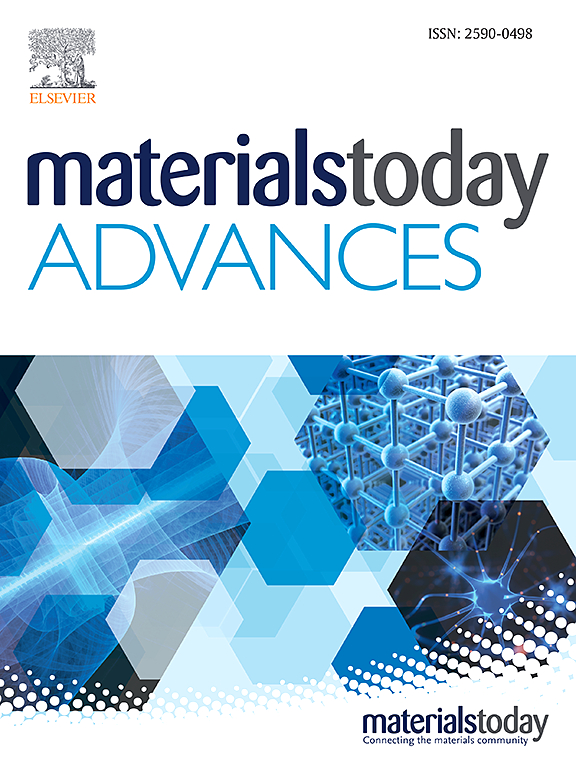Nanostructured proton-exchange membranes from self-cross-linking perfluoroalkyl-free block-co-polymers
IF 8
2区 材料科学
Q1 MATERIALS SCIENCE, MULTIDISCIPLINARY
引用次数: 0
Abstract
A sustainable hydrogen economy relies on fuel cells and electrolyzers, which heavily depend on ion-conducting perfluoroalkylated materials such as Nafion or Aquivion. Together with other perfluorinated alkyl substances, their environmental accumulation, and the rising awareness of risks to human health stress the need for alternative materials. Based on block-co-polymers from octylstyrene and pentafluorostyrene, we present nanostructured proton-exchange membranes. In contrast to problematic perfluorinated alkyl constituents, the involved aromatic fluorine atoms allow mild functionalizations to form tetrafluorostyrene sulfonic acid. Meanwhile, the nonpolar block reduces the stiffness of the material. By introducing a new preparation technique, controlled mitigation of the thiol cross-linking allows membrane self-reinforcement during drying. The reinforcing cross-links enhance the dissolution stability and reduce the water uptake after 24 h down to 33 wt% at 85 °C. Cross-section imaging visualizes the influence of varying di- and tetrablock-co-polymer backbones on the membrane nanostructure with sizes between 20 and 35 nm. The membranes feature proton conductivities comparable to commercial materials at low humidity levels, surpassing commercial Nafion XL at 87 % relative humidity with up to 79 mS cm at 105 °C. As first successful H/air fuel cell tests achieve maximum power densities of up to 0.7 W cm, the nanostructured polymer membranes are a promising candidate for future fuel cell and electrolyzer applications without problematic perfluorinated alkyl substances.自交联无全氟烷基嵌段共聚物的纳米结构质子交换膜
可持续的氢经济依赖于燃料电池和电解器,而燃料电池和电解器在很大程度上依赖于离子传导全氟烷基材料,如 Nafion 或 Aquivion。全氟烷基物质与其他全氟烷基物质在环境中的累积以及人们对人类健康风险的不断认识,都强调了对替代材料的需求。基于辛基苯乙烯和五氟苯乙烯的嵌段共聚物,我们提出了纳米结构质子交换膜。与存在问题的全氟烷基成分相比,其中的芳香族氟原子可以温和地官能化,形成四氟苯乙烯磺酸。同时,非极性嵌段降低了材料的硬度。通过引入一种新的制备技术,可控的硫醇交联缓和使薄膜在干燥过程中自我加固。强化交联增强了溶解稳定性,并降低了在 85 °C 下 24 小时后的吸水率,使其降至 33 wt%。横截面成像显示了不同的二元和四元共聚物骨架对膜纳米结构的影响,膜的尺寸在 20 纳米到 35 纳米之间。这种膜在低湿度条件下的质子传导率与商用材料相当,在相对湿度为 87% 时超过了商用 Nafion XL,在 105 °C 时高达 79 mS cm。由于首次成功的氢/空气燃料电池测试实现了高达 0.7 W cm 的最大功率密度,纳米结构聚合物膜有望成为未来燃料电池和电解槽应用的候选材料,而不会产生全氟烷基物质。
本文章由计算机程序翻译,如有差异,请以英文原文为准。
求助全文
约1分钟内获得全文
求助全文
来源期刊

Materials Today Advances
MATERIALS SCIENCE, MULTIDISCIPLINARY-
CiteScore
14.30
自引率
2.00%
发文量
116
审稿时长
32 days
期刊介绍:
Materials Today Advances is a multi-disciplinary, open access journal that aims to connect different communities within materials science. It covers all aspects of materials science and related disciplines, including fundamental and applied research. The focus is on studies with broad impact that can cross traditional subject boundaries. The journal welcomes the submissions of articles at the forefront of materials science, advancing the field. It is part of the Materials Today family and offers authors rigorous peer review, rapid decisions, and high visibility.
 求助内容:
求助内容: 应助结果提醒方式:
应助结果提醒方式:


